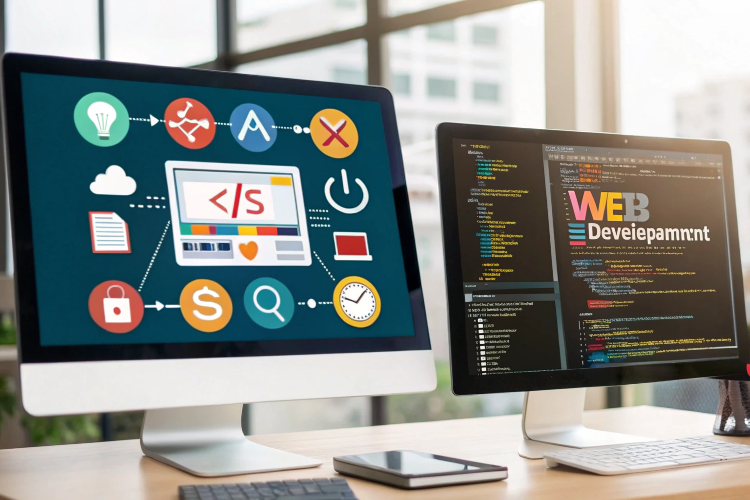Blog
Web Design vs. Web Development: What’s the Difference ?
Web Development & Design ▪ 2025-03-07

In the digital world, websites are the foundation of online presence, and businesses invest heavily in creating high-quality sites. However, one of the most common misconceptions is that web design and web development are the same. While both play crucial roles in website creation, they involve different skill sets, tools, and objectives.
Understanding the differences between web design and web development can help businesses and aspiring professionals choose the right career path, allocate resources efficiently, and build a seamless user experience. This blog explores the key distinctions between web design and web development, their roles, tools, and how they work together.
What is Web Design?
Web design focuses on the visual aesthetics, user interface (UI), and user experience (UX) of a website. It involves creating an attractive and intuitive design that engages visitors and ensures a seamless browsing experience.
Key Aspects of Web Design
-
User Experience (UX) Design
-
Ensures the website is easy to navigate
-
Focuses on user behavior and accessibility
-
Uses wireframing tools to plan layouts
-
-
User Interface (UI) Design
-
Enhances visual appeal with typography, colors, and graphics
-
Ensures a consistent and interactive interface
-
Implements responsive design for different screen sizes
-
-
Graphic Design & Branding
-
Creates logos, icons, and imagery
-
Establishes a brand’s identity through color schemes and fonts
-
Designs marketing materials like banners and social media graphics
-
Common Tools Used in Web Design
-
Adobe XD & Figma – Used for wireframing and prototyping
-
Photoshop & Illustrator – Used for graphic creation and editing
-
Sketch – A favorite tool for UI/UX designers
-
Canva – Used for quick and simple design elements
What is Web Development?
Web development involves coding and programming to bring a web design to life. It focuses on the functionality, structure, and performance of a website.
Types of Web Development
-
Front-End Development
-
Transforms web designs into functional websites
-
Uses HTML, CSS, and JavaScript to build interactive elements
-
Ensures cross-browser and device compatibility
-
-
Back-End Development
-
Manages server-side operations and databases
-
Uses languages like PHP, Python, Ruby, and Node.js
-
Handles security, authentication, and APIs
-
-
Full-Stack Development
-
Combines both front-end and back-end development
-
Requires expertise in both design implementation and server management
-
Popular stacks include MERN (MongoDB, Express.js, React.js, Node.js) and LAMP (Linux, Apache, MySQL, PHP)
-
Common Tools Used in Web Development
-
Code Editors – VS Code, Sublime Text
-
Version Control – Git, GitHub
-
Frameworks & Libraries – React.js, Angular, Bootstrap
-
Databases – MySQL, Firebase, MongoDB
The Key Differences Between Web Design & Web Development
| Feature | Web Design | Web Development |
|---|---|---|
| Focus | Aesthetics, UI/UX | Functionality, backend systems |
| Skills Required | Graphic design, typography, color theory | Programming, databases, security |
| Tools Used | Adobe XD, Figma, Photoshop | VS Code, Git, React, Node.js |
| Outcome | Visual prototype or mockup | Functional website |
How Web Designers and Web Developers Work Together
Although web design and web development are distinct disciplines, they work hand in hand to create functional, visually appealing websites.
Collaboration Process
-
Planning Phase – Designers create wireframes, layouts, and UI elements.
-
Design Implementation – Developers code front-end elements to match the design.
-
Backend Integration – Developers handle server logic, databases, and security.
-
Testing & Optimization – Both designers and developers ensure usability, speed, and mobile responsiveness.
Which Career Path is Right for You?
Choose Web Design If:
-
You enjoy creativity and artistic expression.
-
You have an eye for aesthetics and color schemes.
-
You want to focus on UI/UX and branding.
Choose Web Development If:
-
You love problem-solving and logic.
-
You enjoy coding and working with databases.
-
You want to build functional applications.

